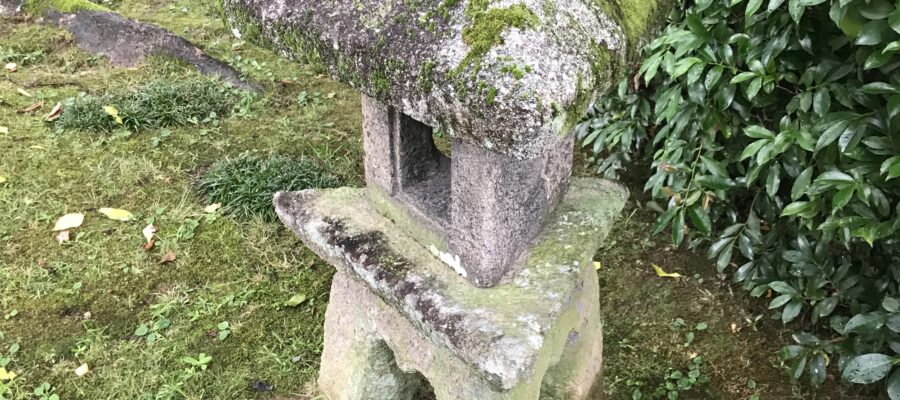影の主役の石造物
桂離宮の回遊を終えましたが、見学コースの途上、沢山の見所と出会いました。建物に込められた洗練さや趣向はもちろんですが、影の主役として様々な石造物を見ることができます。この目で見た灯篭を写真に収めましたが、おそらく、数はもっと多いでしょう。見学中は、あれもこれも気になっていたので、見つけたのは9つだけです。
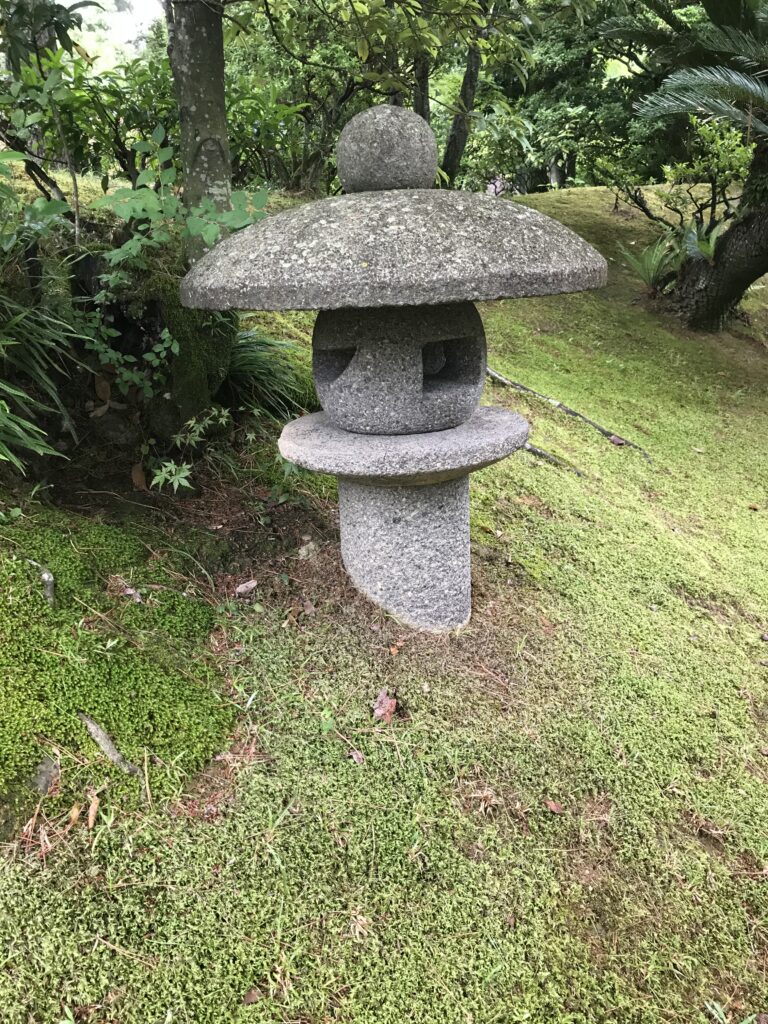
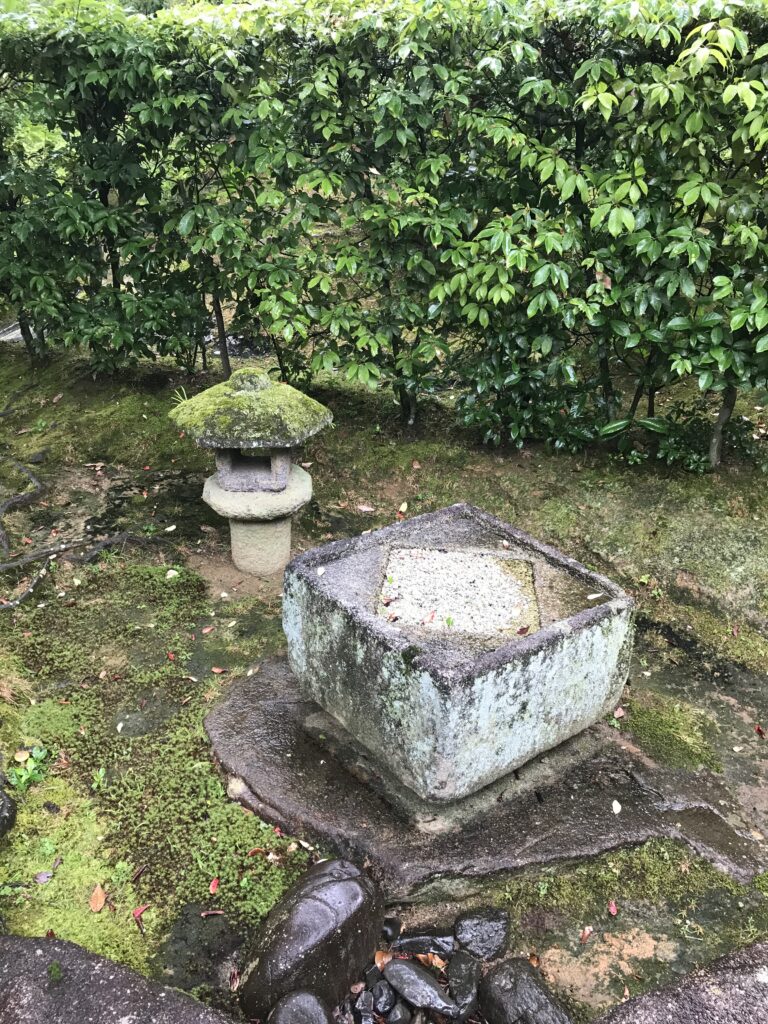
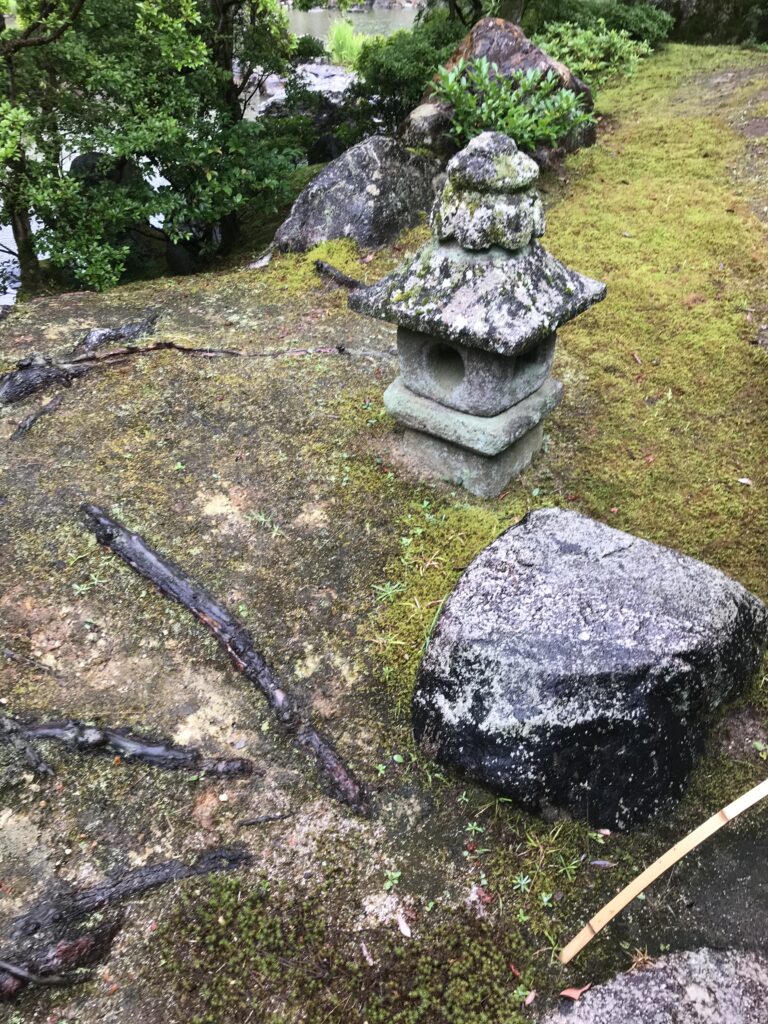
背の高い灯篭は少なく、背の低い灯篭がかくれんぼでもしているように、時々顔を出してくれます。ここから先は海ですよという約束事を演出する岬灯篭は、州浜の先に鎮座していて、われわれに池の見方を教えてくれます。
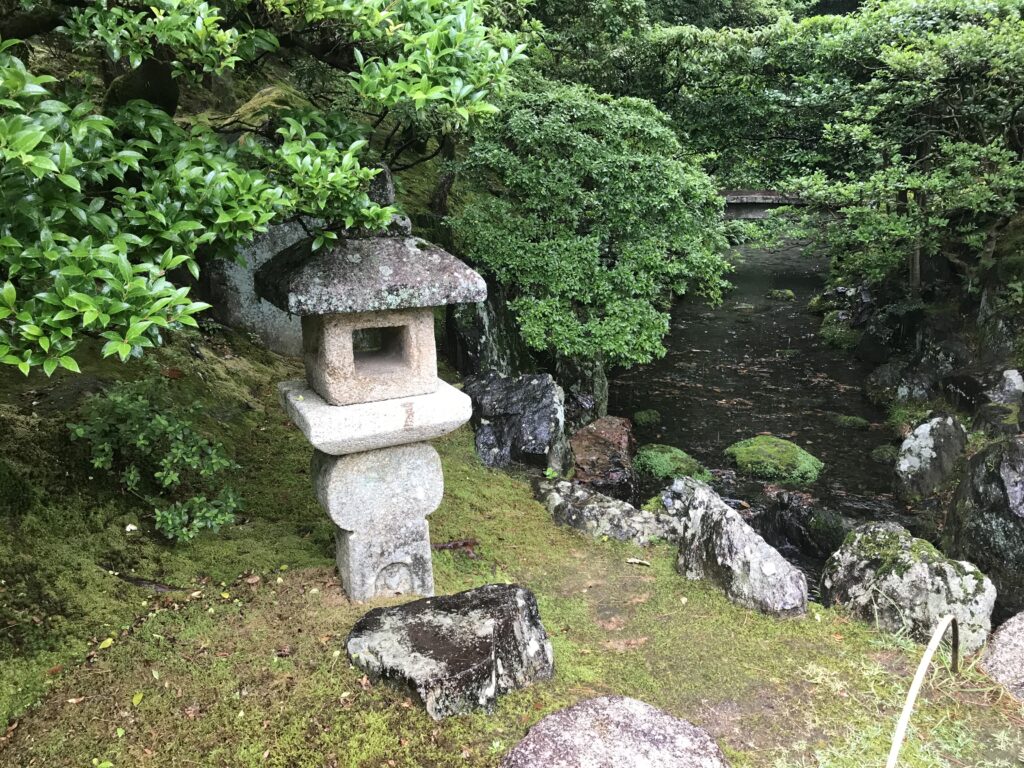
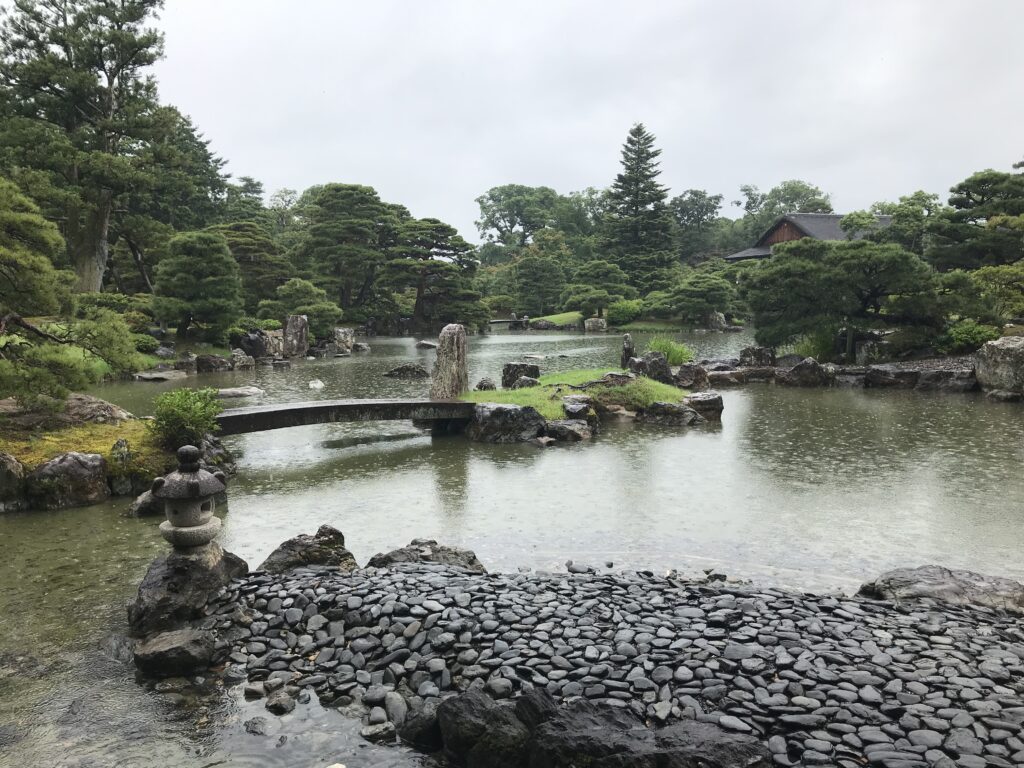
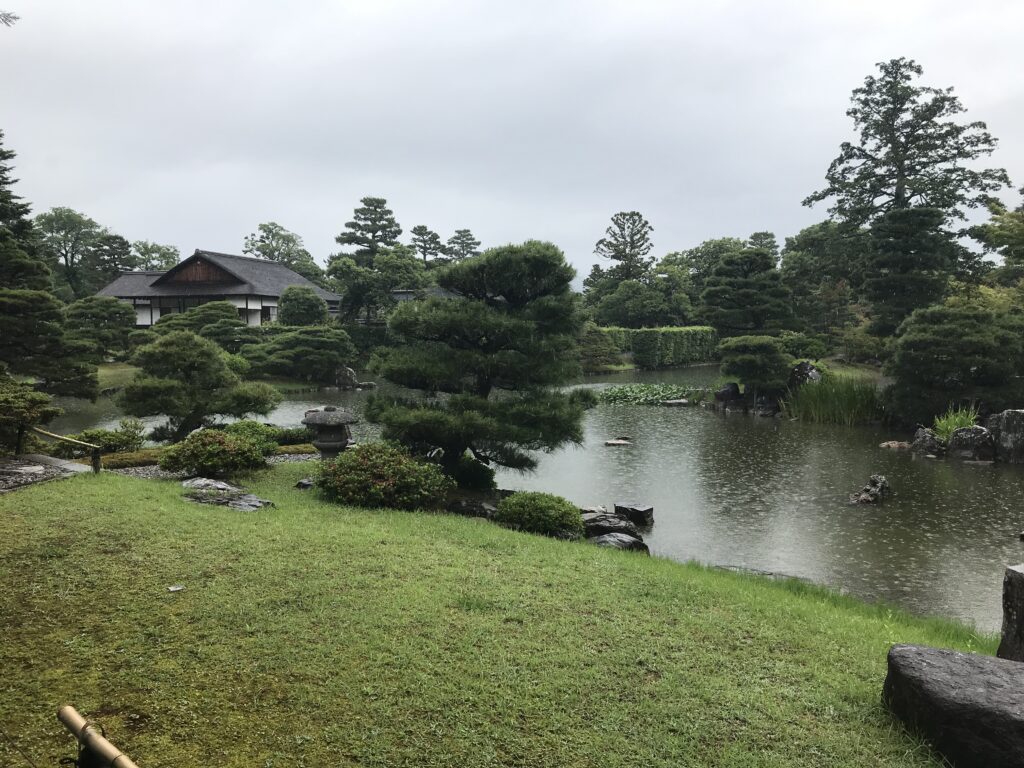
また、初めて見た三角灯篭は、その不安定さゆえに我々の目を引き付けます。作庭家の意図はどのようなものか定かではありませんが、見学に来た人は、それぞれ自分なりの意味づけをして楽しめれば良いのではと思います。
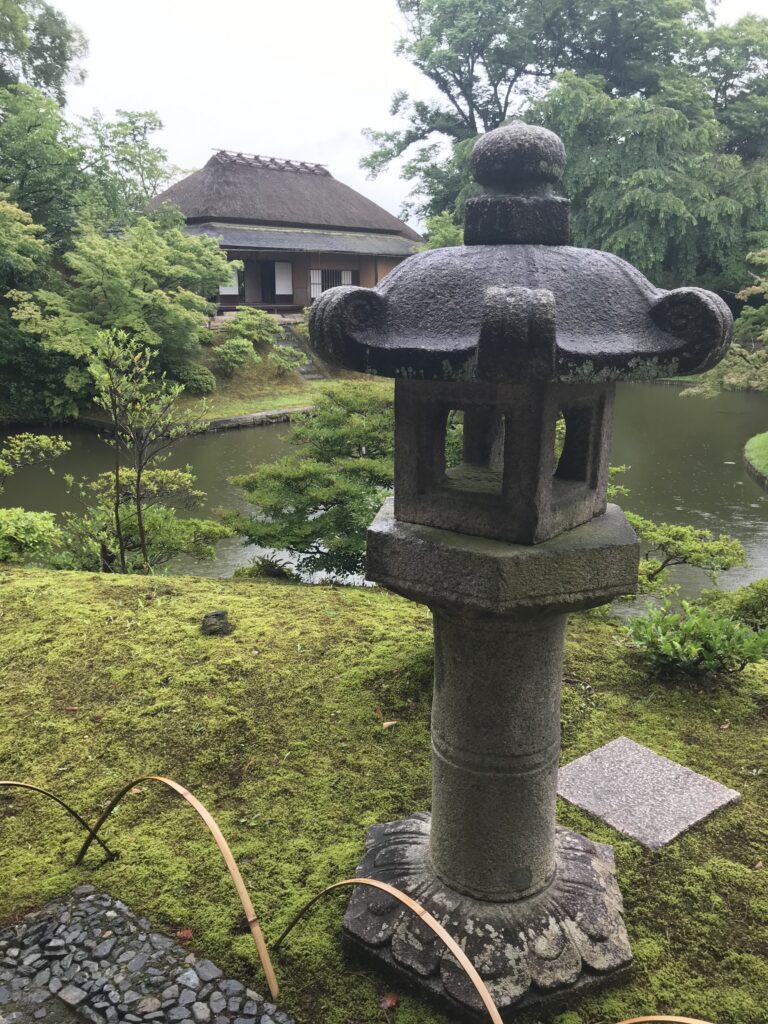
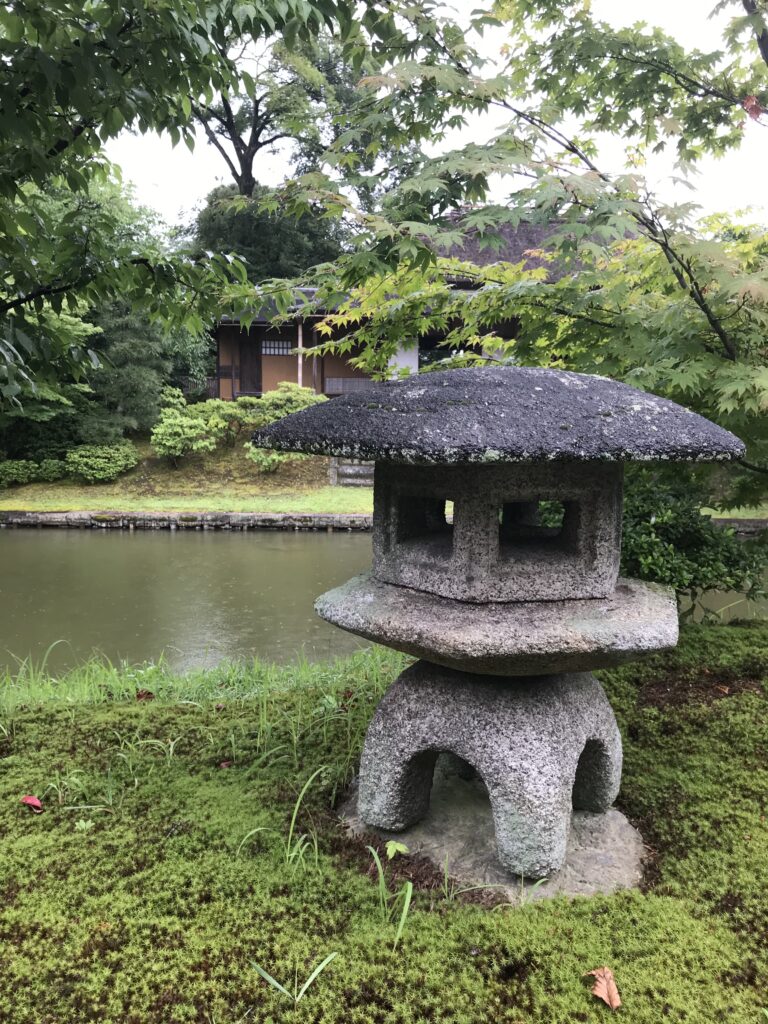
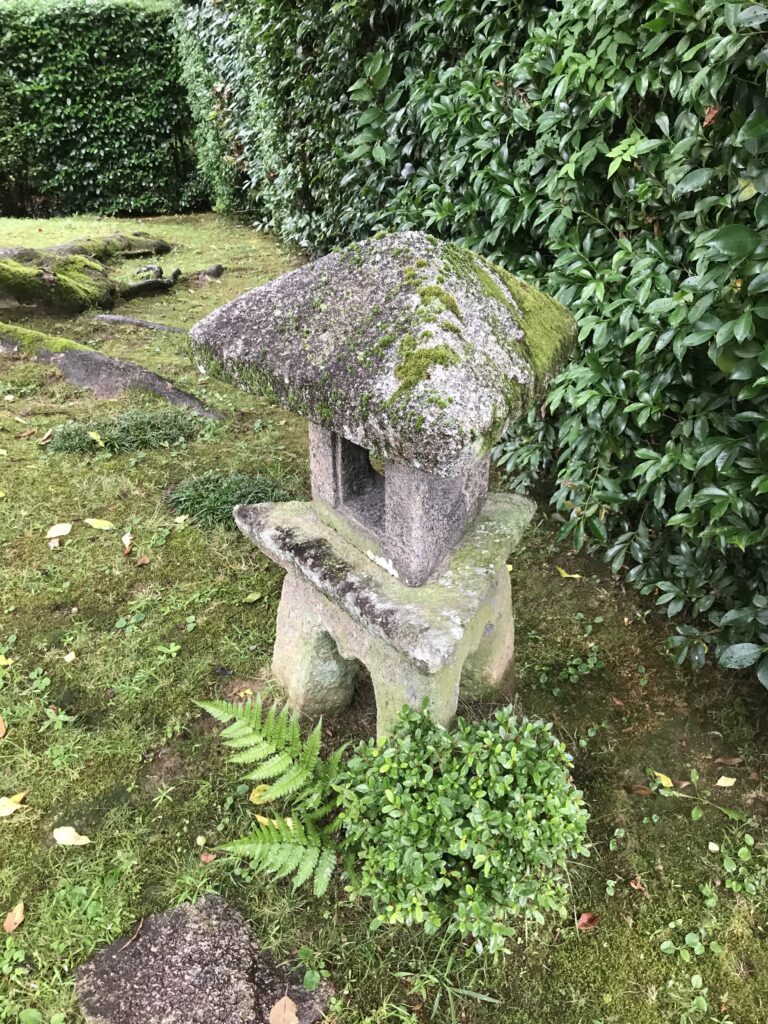
真・行・草の延段
延段も真行草の3種類が使い分けられていました。切り石だけの真、切り石と自然石を混合した行、そして自然石だけの草。どれが好きかと聞かれれば、雨に濡れて艶が出ていたことも影響しますが、行の延段が格好いいです。何事も中庸を好む日本人らしい答えかもしれませんが。
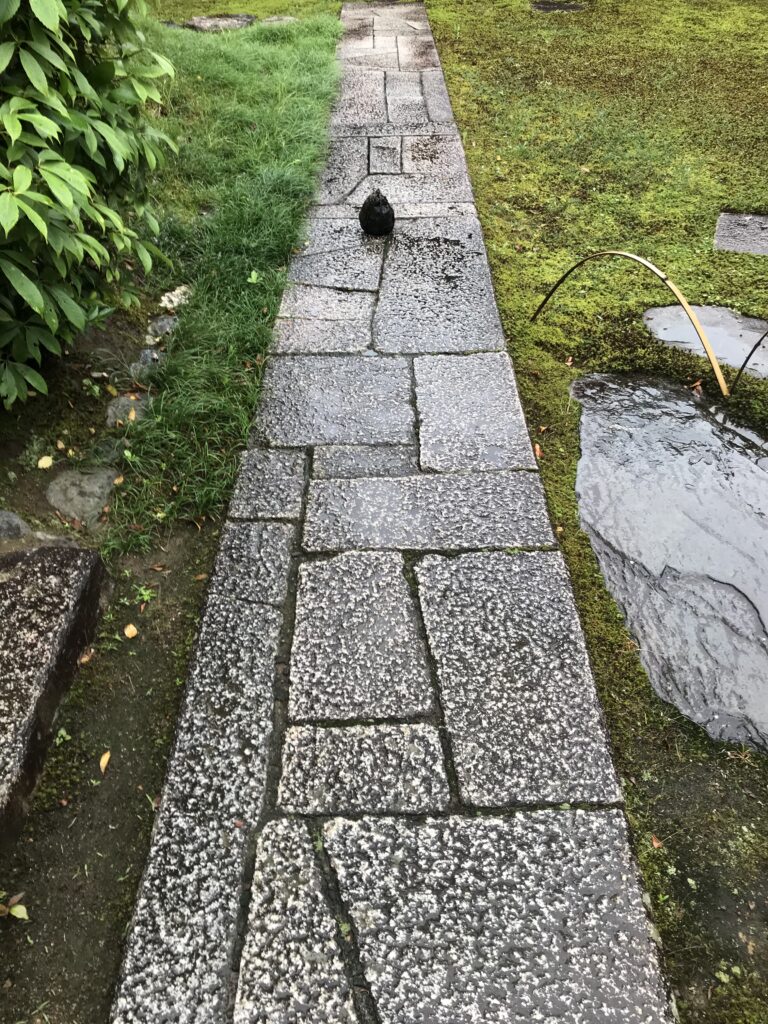
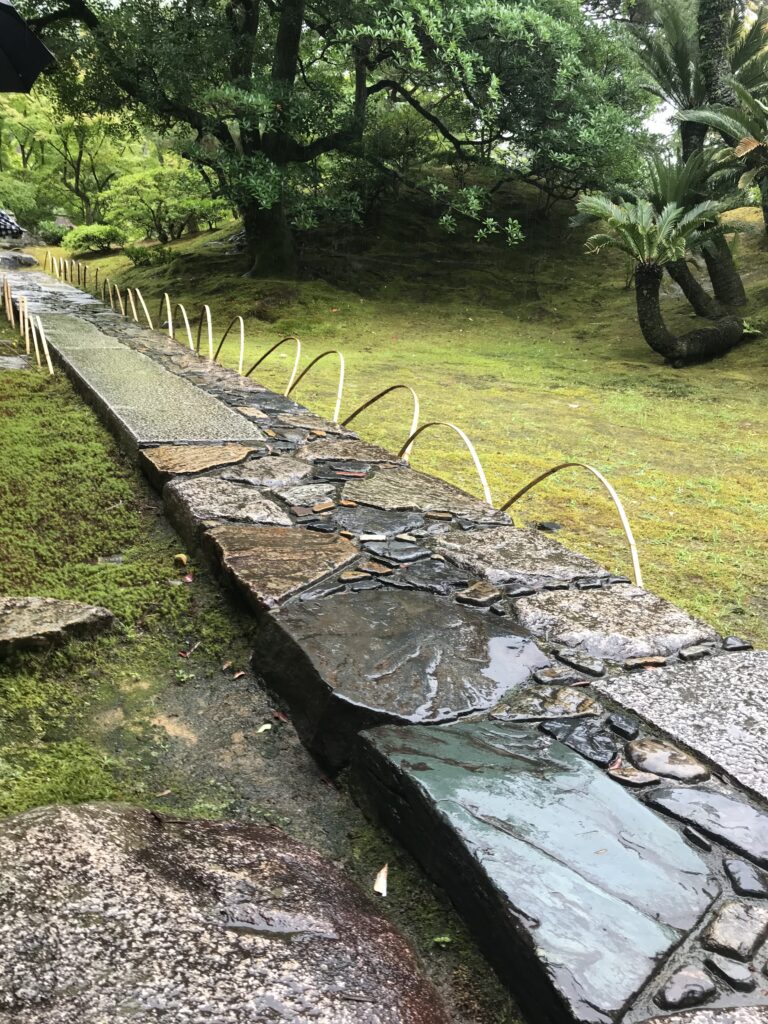
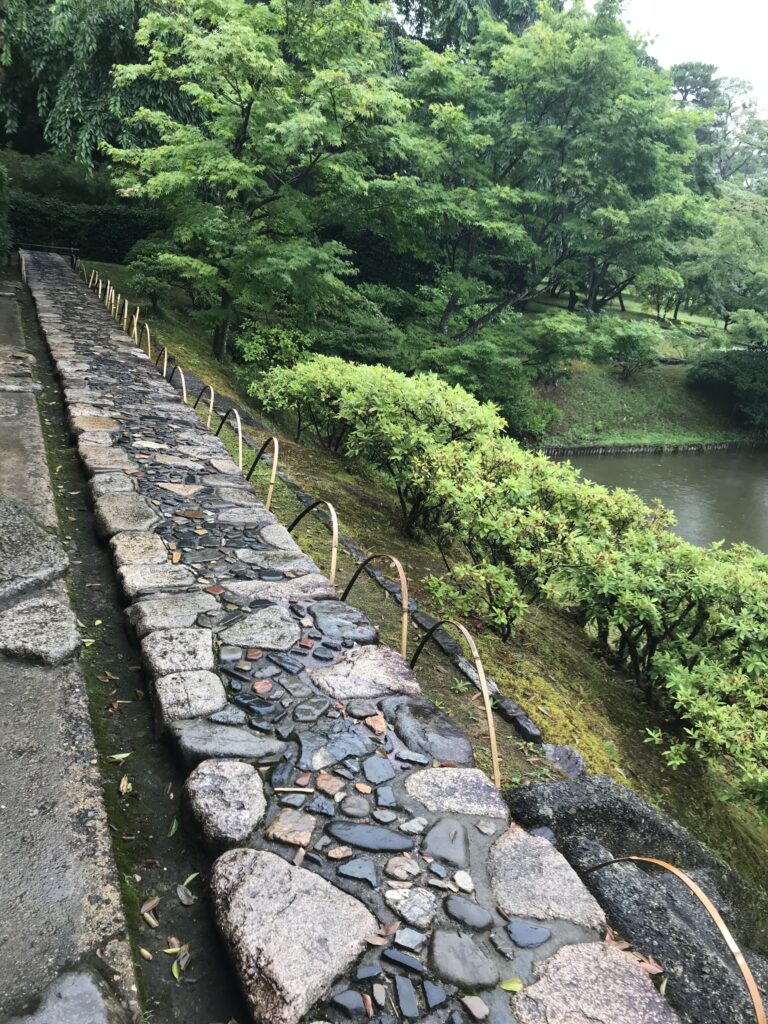
敷石にも一工夫あり
細かい石を敷き詰めた「あられこぼし」の道があったり、色が一つ一つ異なる石を集めて敷石にしていたり、遊び心満載の庭です。足に着いた水分で、青色に変わる敷石には驚かされました。自然の石を、ここまで上手く使った方々に脱帽です。(完)
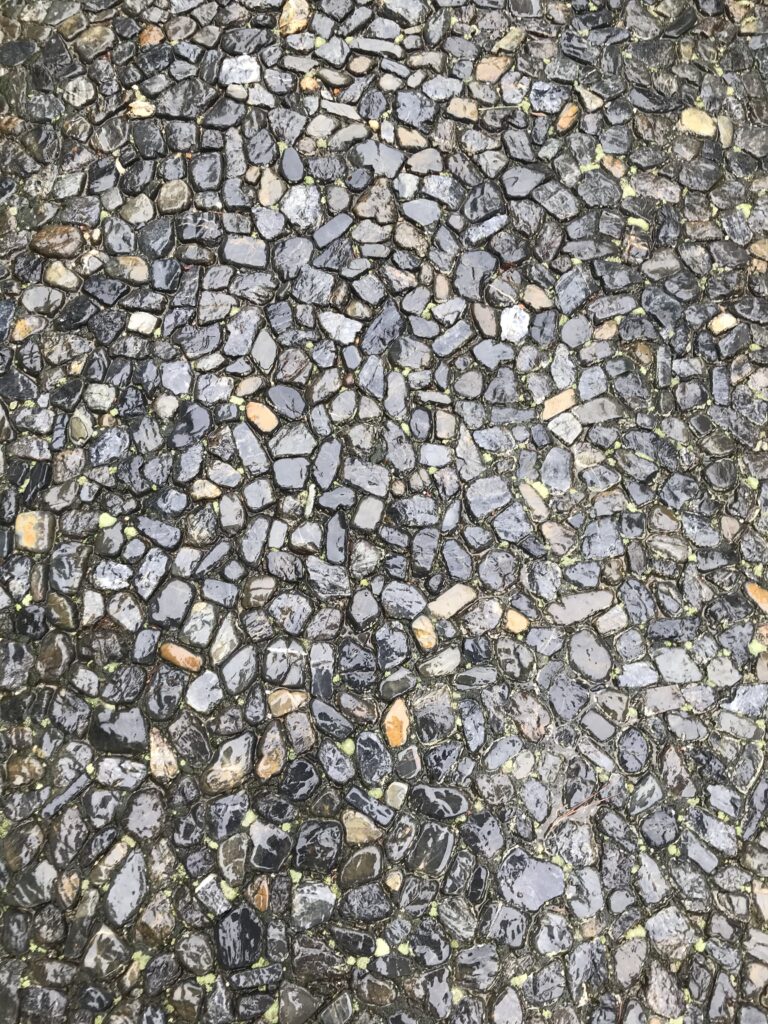
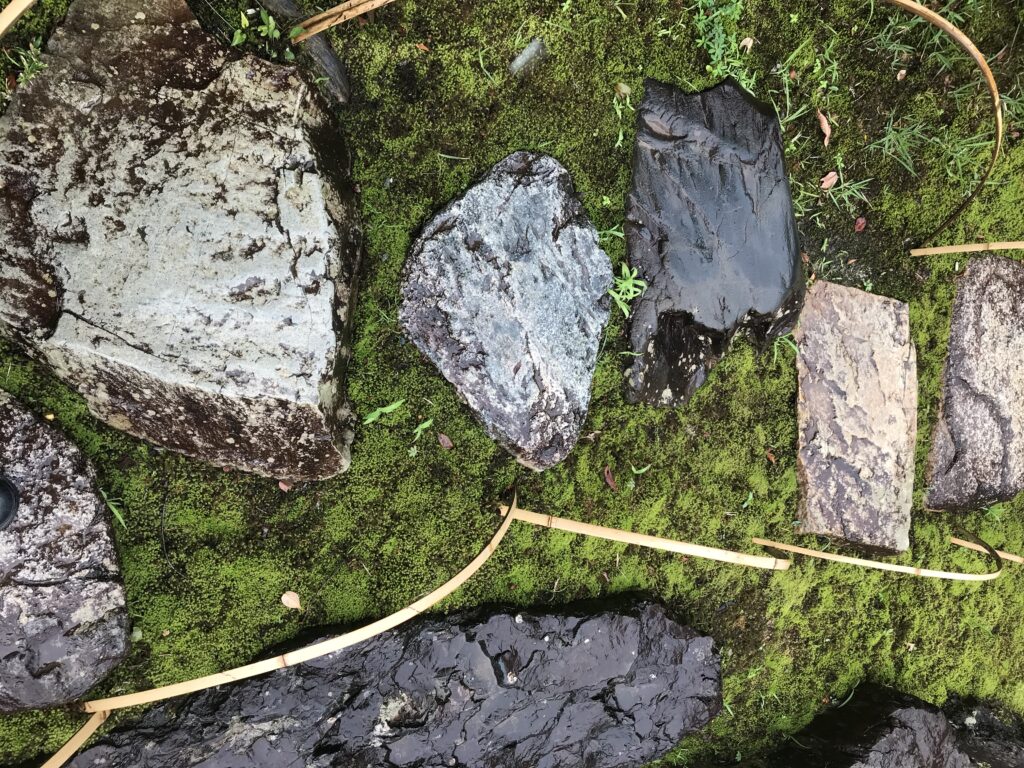
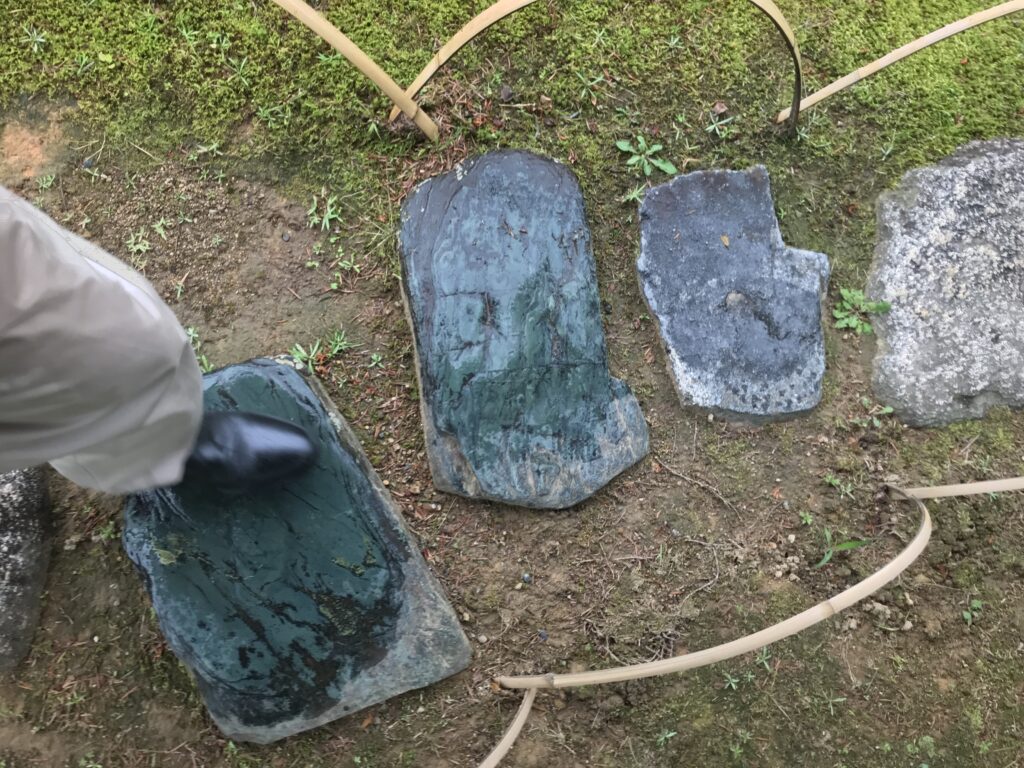
桂離宮が紹介されている書籍
烏賀陽百合さんの「しかけに感動する『京都名庭園』」に桂離宮が紹介されています。
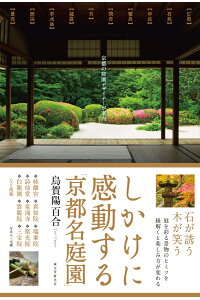
しかけに感動する「京都名庭園」 京都の庭園デザイナーが案内 [ 烏賀陽 百合 ]
価格:1,760円
(2021/5/2 18:44時点)
感想(1件)
Katsura Rikyu ④: Lanterns and extended steps (English)
Stonework in the shadow of the main character
During my tour of the Katsura Rikyu Palace, I encountered many sights along the way. Aside from the sophistication and taste of the buildings, I could also see the various stone structures that played a leading role in the sights. I took pictures of the stone lanterns I saw with my own eyes, but there would be probably many more. During the tour, I was curious about this and that, so I only found nine lanterns.
There were few tall lanterns, but the short ones sometimes appeared as if they were playing hide and seek. The cape lantern, which represented the promise of the ocean from there on, was at the end of the state beach and teached me how to see the pond.
The triangular lantern, which I had never seen before, attracted my attention because of its instability. I was not sure what the gardeners’ intentions were, but I hoped that each visitor would be able to enjoy the lanterns in his or her own way.
Extended Stone Steps of Shin (Formal Style), Gyou (Semi-Formal Style), and Sou (Casual Style)
There were also three different types of Nobedan (Extended Stone Steps): Shin (Formal Style), Gyou (Semi-Formal Style), and Sou (Casual Style). There were three types of Extended Steps: Formal Style with only cut stones, Semi-Formal Style with a mixture of cut stones and natural stones, and Casual Style with only natural stones. If you were to ask me which one I liked better, I would have to say the Semi-Formal Extended Stone Steps, although the fact that it was wet and shiny from the rain had an effect. This may be the answer of a Japanese who prefers moderation in everything.
Paving stones also have a twist.
The garden was full of playful elements, such as the “hail and spill” path made of fine stones, and the collection of stones of different colors that were used as paving stones. I was amazed at the paving stones that turned blue when my wet shoes touched the stones.I admired the people who used the natural stones so well. (End)
Katsura Rikyu ④ : Lanternes et marches prolongées (Français)
Travail de la pierre dans l’ombre du personnage principal
Lors de ma visite du palais Katsura Rikyu, j’ai rencontré de nombreuses curiosités en chemin. Outre la sophistication et le goût des bâtiments, j’ai pu voir les diverses structures en pierre qui jouaient un rôle de premier plan dans les curiosités. J’ai pris des photos des lanternes de pierre que j’ai vues de mes propres yeux, mais il y en aurait probablement beaucoup plus. Pendant la visite, j’étais curieux de tout et de rien, si bien que je n’ai trouvé que neuf lanternes.
Il y avait peu de grandes lanternes, mais les petites donnaient parfois l’impression de jouer à cache-cache. La lanterne du cap, qui représentait la promesse de l’océan à partir de là, se trouvait au bout de la plage publique et m’a appris à voir l’étang.
La lanterne triangulaire, que je n’avais jamais vue auparavant, a attiré mon attention en raison de son instabilité. Je n’étais pas sûr des intentions des jardiniers, mais j’espérais que chaque visiteur pourrait profiter des lanternes à sa manière.
Marches en pierre prolongées de Shin (style formel), Gyou (style semi-formel), et Sou (style décontracté)
Il existe également trois types différents de Nobedan (marches en pierre prolongées) : Shin (style formel), Gyou (style semi-formel) et Sou (style décontracté). Il y avait trois types de pas étendus : Le style formel avec uniquement des pierres taillées, le style semi-formal avec un mélange de pierres taillées et de pierres naturelles, et le style décontracté avec uniquement des pierres naturelles. Si vous me demandiez lequel je préfère, je dirais le style semi-formel, bien que le fait qu’il soit mouillé et brillant à cause de la pluie ait eu un effet. C’est peut-être la réponse d’un Japonais qui préfère la modération en tout.
Les pavés ont également une particularité.
Le jardin était plein d’éléments ludiques, comme le chemin “grêle et déversement” fait de pierres fines, et la collection de pierres de différentes couleurs qui servaient de pavés. J’ai été étonné par les pavés qui devenaient bleus lorsque mes chaussures mouillées touchaient les pierres.J’ai admiré les personnes qui utilisaient si bien les pierres naturelles. (Fin)
